 Everyone feels a bit dizzy or lightheaded occasionally, but it normally passes quickly.
Everyone feels a bit dizzy or lightheaded occasionally, but it normally passes quickly.
And usually there is nothing to worry about.
But sometimes that lightheaded feeling points to underlying problems that are far more serious and may need immediate medical attention.
That’s why we’ve listed the five most common causes for dizziness and lightheadedness, from the least to most serious.
Common causes include:
1. Dehydration: dehydration can lower your blood pressure, raise your body temperature and increase your breathing rate. The net result of this is that the blood vessels in your brain dilate, and there’s not enough blood to fill them up.
You might feel lightheaded after intense exercise, because more of your blood gets sent to the muscles you’ve just worked and less of it goes to your brain. A lie down and a drink of water should help to get you back to normal quickly.
2. Low blood pressure: there are a whole host of things that can cause low blood pressure, and you’ll need to know which one applies to you before you can get rid of your dizziness.
Resting in bed for too long, pregnancy, dehydration, alcohol, diuretics, blood pressure medication, antipsychotic drugs, low heart rate, an underactive thyroid, and low blood sugar (among others) are all potential causes, so it’s best to talk to your doctor to get to the root of the problem.
3. Prescription Drugs: The US Food and Drug Administration is responsible for approving drugs. As a general principle, it will only accept drugs if their benefits outweigh their side effects (and if they actually work!)
Dizziness is one of the non-life-threatening side effects that they think most people can live with, so you’ll see it listed among the effects of many commonly sold drugs.
A 2013 study published in the Journal of Pharmacology and Pharmacotherapeutics pointed to anti-convulsants, blood pressure medication, antihistamines, antibiotics, antidepressants, antipsychotics, and anti-inflammatories as causes.
If you have to take any of these drugs, then you’re probably going to experience dizziness, so be extra vigilant to avoid injury or look for better alternatives.
4. Low blood sugar: your body turns glucose into glycogen, which is the fuel that your brain runs on. If that fuel gets too low then your brain lets you know about it, which is why you can suddenly feel super hungry and almost painfully desperate for food. This lack of blood sugar can also be the reason behind mood swings, low energy, shaking, sweating, confusion, and blurred vision. Anytime you feel like this, reach for some fruit, a bowl of oats, or some wholegrain bread to give your mind and body the glucose they crave.
5. Stroke: American Family Physician says that this one is easy for a doctor to diagnose when you’re at the hospital, because it’s also accompanied by other neurological symptoms. The American Stroke Association advises you to look for facial drooping on one side by checking that your smile is even, and to check for arm weakness by raising both. If either of them drifts downwards then it could be a sign of stroke. Slurred speech is a giveaway, and you can check this by speaking out loud, either from memory or by reading some tricky sentences.

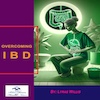 Overcoming IBD
Overcoming IBD Multiple Sclerosis
Multiple Sclerosis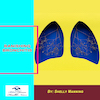 Banishing Bronchitis
Banishing Bronchitis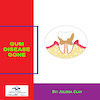 Gum Disease Gone
Gum Disease Gone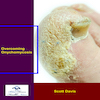 Overcoming Onychomycosis
Overcoming Onychomycosis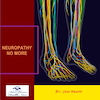 Neuropathy No More
Neuropathy No More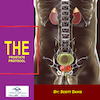 The Prostate Protocol
The Prostate Protocol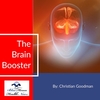 Brain Booster
Brain Booster
 Ironbound
Ironbound
 Solution for Shingles
Solution for Shingles
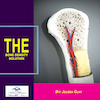 The Bone Density Solution
The Bone Density Solution
 The Ultimate Healing Protocol
The Ultimate Healing Protocol
 The Parkinson's Protocol
The Parkinson's Protocol
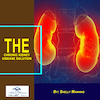 The Chronic Kidney Disease Solution
The Chronic Kidney Disease Solution
 Overthrowing Anxiety
Overthrowing Anxiety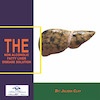 The Fatty Liver Solution
The Fatty Liver Solution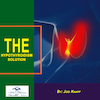 The Hypothyroidism Solution
The Hypothyroidism Solution
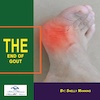 The End of Gout
The End of Gout The Blood Pressure Program
The Blood Pressure Program
 The Oxigized Cholesterol Strategy
The Oxigized Cholesterol Strategy
 Stop Snoring And Sleep Apnea Program
Stop Snoring And Sleep Apnea Program
 The Arthritis Strategy
The Arthritis Strategy The Vertigo & Dizziness Program
The Vertigo & Dizziness Program The 3-Step Diabetes Strategy
The 3-Step Diabetes Strategy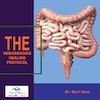 Hemorrhoids Healing Protocol
Hemorrhoids Healing Protocol The Erectile Dysfunction Master
The Erectile Dysfunction Master Weight Loss Breeze
Weight Loss Breeze The IBS Program
The IBS Program The Insomnia Program
The Insomnia Program The Migraine and Headache Program
The Migraine and Headache Program The Neck Pain Solution
The Neck Pain Solution The Menopause Solution
The Menopause Solution The Ejaculation Master
The Ejaculation Master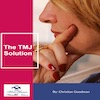 The TMJ Solution
The TMJ Solution The Acid Reflux Solution
The Acid Reflux Solution The Fibromyalgia Solution
The Fibromyalgia Solution The Psoriasis Strategy
The Psoriasis Strategy